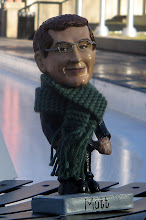Is it the shoulder, the elbow, maybe the hand? Or we could think more in the abstract - Daniel Barenboim talks about the head, the heart, and the gut, three principal and equal contributors.
 I'm going to suggest something a little more superficial, though: the skin. It's our largest organ, also our most prominent, most often injured, and quickest to heal. We constantly stretch it, squeeze it, splay it, poke it, pluck it - we ask it to be firm, soft, callused, flexible, tough, fleshy, sensitive. Amazingly, it will usually do all these things, without us taking much notice until it cracks, chafes, burns or blisters.
I'm going to suggest something a little more superficial, though: the skin. It's our largest organ, also our most prominent, most often injured, and quickest to heal. We constantly stretch it, squeeze it, splay it, poke it, pluck it - we ask it to be firm, soft, callused, flexible, tough, fleshy, sensitive. Amazingly, it will usually do all these things, without us taking much notice until it cracks, chafes, burns or blisters.Within the skin are nerve fibers, which create our sense of touch. These nerves provide our most important sensory input while playing; even more than our ears, they allow us to micro-adjust and play in tune. By the time our ears have heard a note played out of tune, everyone else's ears have heard it too - so we depend on our skin to correct it quicker.
A cellist friend recently cut her left middle finger at the knuckle, rather severely - she had to get eight stitches. She's recovering well, but it's still been frustrating for her to play with injured skin. For a while she couldn't flex the finger enough, and then that finger's vibrato didn't seem to work. For something superficial, the skin can have a deep impact.
One bass maker once told me that the reason strings take a while to break in - and sound so much better after a few weeks of playing - is that skin cells and oils fill in the string's gaps, softening and warming the edges of its vibration. So skin becomes an essential part of the instrument, as well as our own bodies. We leave little pieces of our skin all over the place - as gross as that might seem.
I haven't read too much about the skin, and I can't remember any teacher coaching me on proper skin care. But I've definitely been paying more attention to it since I moved to Calgary. The climate is very dry, which can cause our skin (as well as our basses) to tighten and crack. The best solution to the problem seems to be a good humidifier, and some well-insulated gloves.


